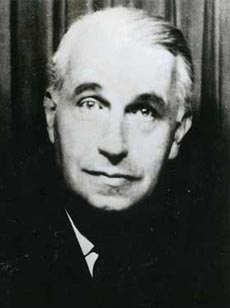13TH LECTURE AT THE GRAMSCI MONUMENT, THE BRONX, NYC: 13TH JULY 2013 TRANSCENDENTAL HEADLESSNESS MARCUS STEINWEG

Georges Bataille
1) Art exists only as an assertion.
2) Every assertion is headless, blind and exaggerated. To assert headlessness itself demands of art a kind of breathless precision.
3) The subject of art is a subject of this self-assertion. It asserts itself as a subject of breathlessness which leads it to the limit of its being as subject. By subject I denote that which is irreducible to its status as object, to its objective reality. The object-status constitutes the subject's portion of reality. A subject is what transcends, transgresses, surpasses this reality since it is something other than an object codified and represented in the realm of facts. The factical codification of the subject can be neither disputed nor made absolute. It is nothing other than a fact. In relation to this fact, the subject asserts itself as a nameless resistance in order at no time to assimilate itself to the authority of facts.
4) The subject's world is not a universe of familiarity into which it were inserted like an object. The subject is not in the world like water in water. It articulates a distance from its world by remaining irreducible to its world-horizon. Therefore, one must insist on its artificiality and its heterogeneity; it is nothing natural, but something made, pure and simple. A theory of art has to make a connection with a theory of the subject, because the subject has the status of something made, of a construction. The subject asserts its subject-form, among other things, through the assertions of form which are artworks.
5) Art is always violent, always over-hasty, always too fast. Art is invention and construction. Art is a-natural: artificial. Its constructivism unites its activity and its technicism. Art owes its progressive character to the will to assert a form that makes chaos precise. Art exists only as an assertion of form which accelerates beyond what is well-known, while refusing to allow itself to be assimilated to any kind of nature. The alliance with the natural is necessarily regressive. It enters a coalition with a metaphysics of the origin which is at work in all attempts to stabilize the present by recurring to the past. Art is a transgressing and transcending of naturalism and originism. The new in art is too new to be old like an origin.
6) The artwork neither articulates its intimacy with nature and the origins, nor does it declare its solidarity with the Zeitgeist. Art exists only as a conflict with its time. Every genuine artwork comes from the future, never from the past. Poor art can be recognized by its sentimentality, nostalgia, admiration of the past, in short, by its inability to make the future precise. Instead of competing with documentation and historical work, it is always a matter of giving a form today, here and now, to the formlessness of tomorrow. Art includes the courage to give answers to questions that do not pre-exist. There is no art beyond the affirmation of something new. No matter how much, as demanded by the Aristotelean perspective, it has to refer to what already exists, no matter how much it remains embedded in the material texture, the new rewrites it so much that in it the new appears as something unforeseen.
7) Art is not a reaction. Instead of responding to a situation, art is a traversal, transgression and transcending of its economic, political, social, cultural determination. The transcending of its relative conditions is the absolute precondition for art. The transgressive transcending of these conditions is affirmative because it holds itself open to the beyond of realities as possibilities. An opening that tears the subject from its embrace with reality.
8) Art was never anything other than an agreement with the fragility of its time. Art does not come from a stable situation; it is the experience of the instability of instituted reality. Art exists only as the experience of the porosity of the system of facts. Therefore, for art there can be no alliance with the facts, which does not mean, however, that it disputes or misrecognizes their power. But art does not exhaust itself by demonstrating this non-misrecognition through the analytical power which it also has. As long as art does not transgress and transcend its knowing, it is not art. It would be nothing other than a form of self-reassurance of the subject within the web of its critically commentated situation. Only an assertion of form, that evades narcissistic self-reassurance by articulating the fleetingness of factual certainties, succeeds in confronting the univer sal inconsistency which is the subject's genuine, proper time and its genuine, proper place, for, to be a subject means to transgress the horizon of facts in order to give room to the experience of a primordial tornness, which is the subject’s truth, by asserting a new form. I call this tornness the incommensurability of a life which, as the life of a subject, accelerates beyond its representation as a subject in the field of aesthetic, social, political and cultural evidence. The subject does not articulate this distance only subsequently. It is nothing other than the distance which it articulates toward the authority of facts. It distances itself from the world of the conceptual and aesthetic codes which suggest to it the illusion of a firm identity, while reducing it to its status as object. Resistance to this reduction means lifting oneself up in view of factual reality, opening up to the turbulence of life in its uncontrolled dimension. That is the dimension of chaos which marks the edge of worldly events, the contingency implicit in them.
